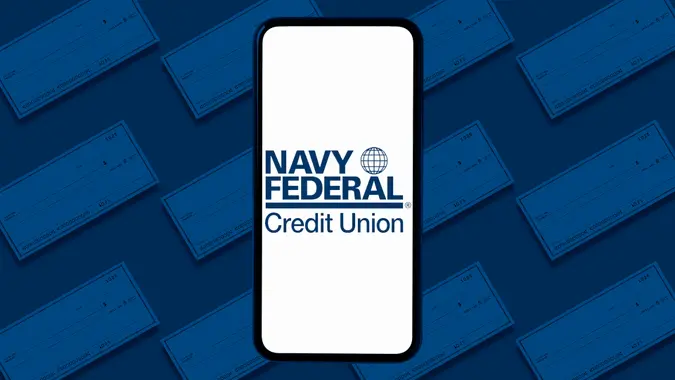How To Join a Credit Union: 4 Easy Steps

Commitment to Our Readers
GOBankingRates' editorial team is committed to bringing you unbiased reviews and information. We use data-driven methodologies to evaluate financial products and services - our reviews and ratings are not influenced by advertisers. You can read more about our editorial guidelines and our products and services review methodology.

20 Years
Helping You Live Richer

Reviewed
by Experts

Trusted by
Millions of Readers
Credit unions are not-for-profit financial institutions owned by their members. They offer higher-yield deposit rates, loans with lower interest and superior customer service compared to banks — but you must be a member to benefit.
If you’re interested in joining the growing trend toward credit unions, this guide will show you how to join, who qualifies and why credit unions could be a good fit.
Why Choose a Credit Union?
Unlike banks, credit unions return profits directly to members in the form of better rates and fewer fees. They might not match big banks in terms of mobile banking apps, branch availability or ATM locations but they excel at delivering:
- Lower-cost loans
- Higher-yield savings
- Fewer or reduced fees
- Personalized service
How To Join a Credit Union: 4 Simple Steps
Each institution has its own specific process, but there are generally four steps to joining any credit union.
Step 1: Check Membership Requirements
Each credit union has its own eligibility rules. Common ones include your profession, location, military service, school affiliation or membership in a particular organization.
Step 2: Gather Required Documents
You’ll typically need:
- A government-issued ID
- Proof of eligibility
- Your Social Security number
- Funds for opening deposit
Step 3: Compete the Application
Most credit unions let you apply online or at the branch. Follow the prompts online or let the bank teller walk you through the process.
Step 4: Fund Your Account
Some credit unions only require as little as $5 to open an account and officially become a member.
Common Credit Union Membership Requirements
Each credit union is unique, but common qualifications include:
- Profession: Examples include credit unions for teachers or physicians, but they can also represent workers and retirees from specific companies, like Boeing.
- Location: Some credit unions require residence in a certain county, state or other geographic region.
- Affiliations and memberships: Some require membership in specific labor unions, churches or fraternal organizations.
- Academic affiliation: Many colleges and universities have credit unions that serve their students.
- The military: Some credit unions serve military personnel and veterans, in general. Others are service- or branch-specific.
- Federal credit unions: These credit unions have a national presence and typically have fewer restrictions on who can join.
- Family and charity: Many credit unions grant membership to the families of people who qualify, even if they wouldn’t qualify alone. Others welcome members who make donations — even small donations — to an affiliated charity or foundation.
Credit Unions That Are Easy To Join
Want a low-barrier option? These credit unions welcome members from nearly anywhere:
- Alliant Credit Union:
- You can join Alliant Credit Union if you live in or near Chicago, if you work for one of Alliant’s many partner businesses and organizations, or if you’re a domestic partner or immediate family member of a current member.
- If not, you can join with a one-time $5 donation to the charitable Alliant Credit Union Foundation.
- Navy Federal Credit Union:
- All active duty, veterans and retired personnel from the Army, Navy, Marine Corps, Air Force, National Guard, Coast Guard and Space Force are eligible for Navy Federal membership.
- Family members and civilian Department of Defense employees can also join.
- Consumers Credit Union:
- Anyone can join by paying a $5 membership fee, which CCU will reimburse.
- PenFed Credit Union:
- Anyone can join PenFed by opening a qualifying account and depositing at least $5.
How To Choose the Right Credit Union
When looking for a new credit union, ask yourself:
- Do I want a branch nearby?
- Is low interest on my loans a priority?
- Do I want a credit union that supports a specific group or cause?
- Will I qualify based on my current affiliations?
The National Credit Union Administration has a search tool that you can use to find eligible credit unions in your area. You can also search by the services they offer.
Conclusion
Credit unions can provide better terms, cheaper loans, fewer fees, higher yields and more personalized service — but their membership requirements determine whether you’ll be able to take advantage of those benefits.
It’s important to research several options that align with your goals and choose the right one at the intersection of service, cost, convenience and community.
FAQ
Knowing the membership requirements and understanding how to join is the first step to becoming part of any credit union. The answers to these frequently asked questions will make the process clearer.- What documents do I need to join a credit union?
- You’ll need the same documents you would use to open a bank account:
- Valid qualifying identification
- Social Security or Tax Identification number
- Proof of residence
- Documents to validate your membership eligibility, such as proof of military service or company employment.
- You’ll need the same documents you would use to open a bank account:
- Can a regular person join a credit union?
- Some credit unions let the general public bypass their typical eligibility requirements by paying a nominal membership fee or making a small donation to an associated charitable foundation.
- How much money is required to open an account at a credit union?
- Minimum deposits vary but are often as low as $5.
- Is it a good idea to join a credit union?
- It can be. Credit unions often offer lower fees, better rates and more personal service than traditional banks.
Our in-house research team and on-site financial experts work together to create content that’s accurate, impartial, and up to date. We fact-check every single statistic, quote and fact using trusted primary resources to make sure the information we provide is correct. You can learn more about GOBankingRates’ processes and standards in our editorial policy.
 Written by
Written by  Edited by
Edited by  Fact Checked by
Fact Checked by 

























